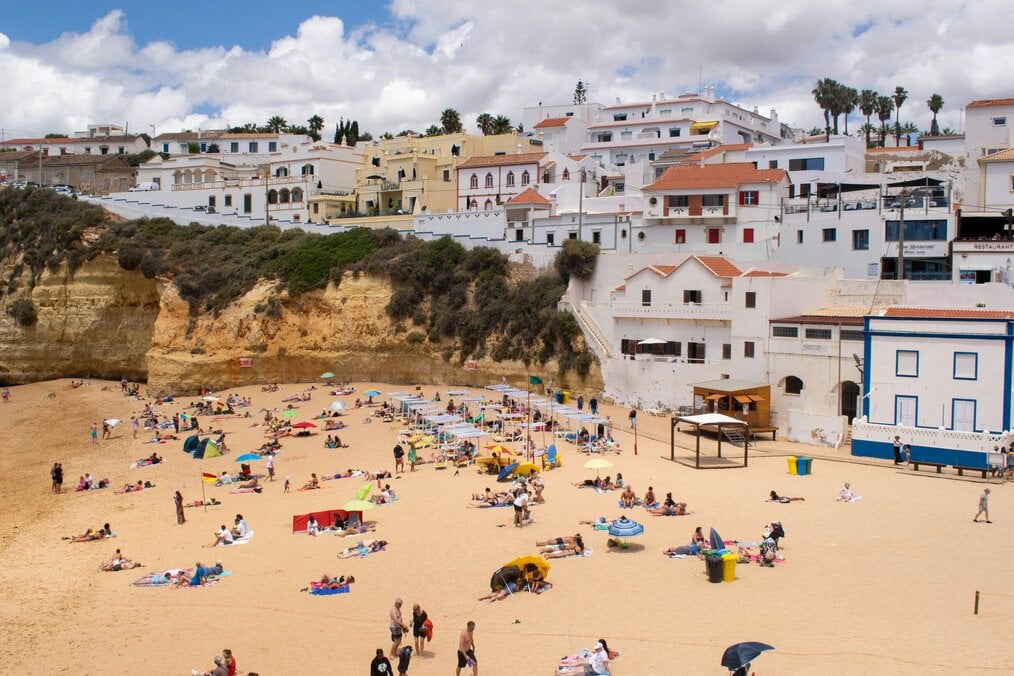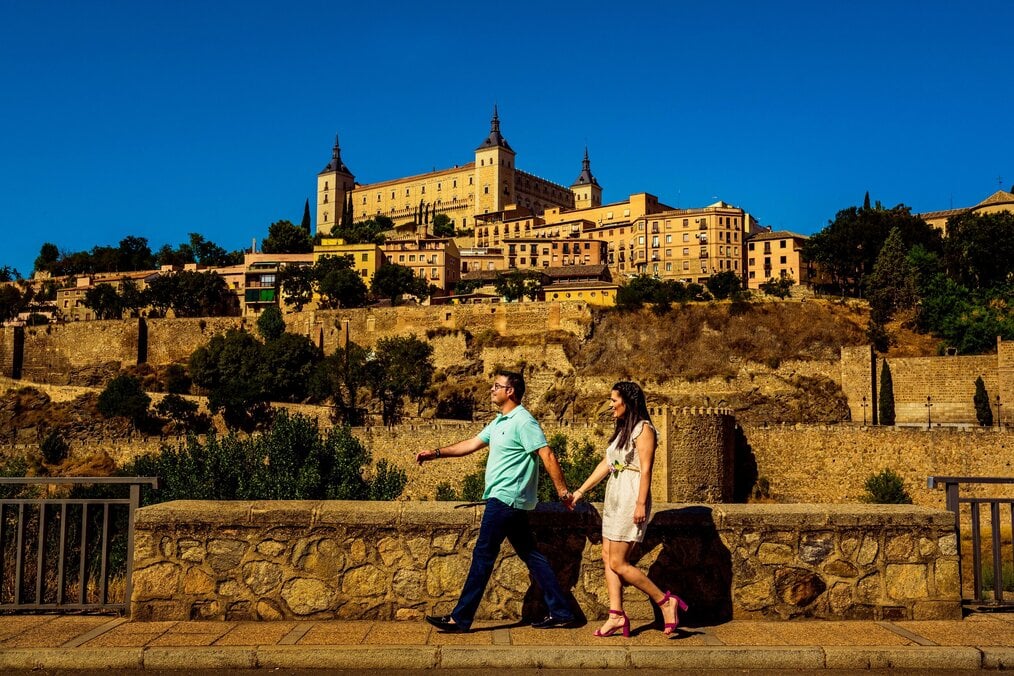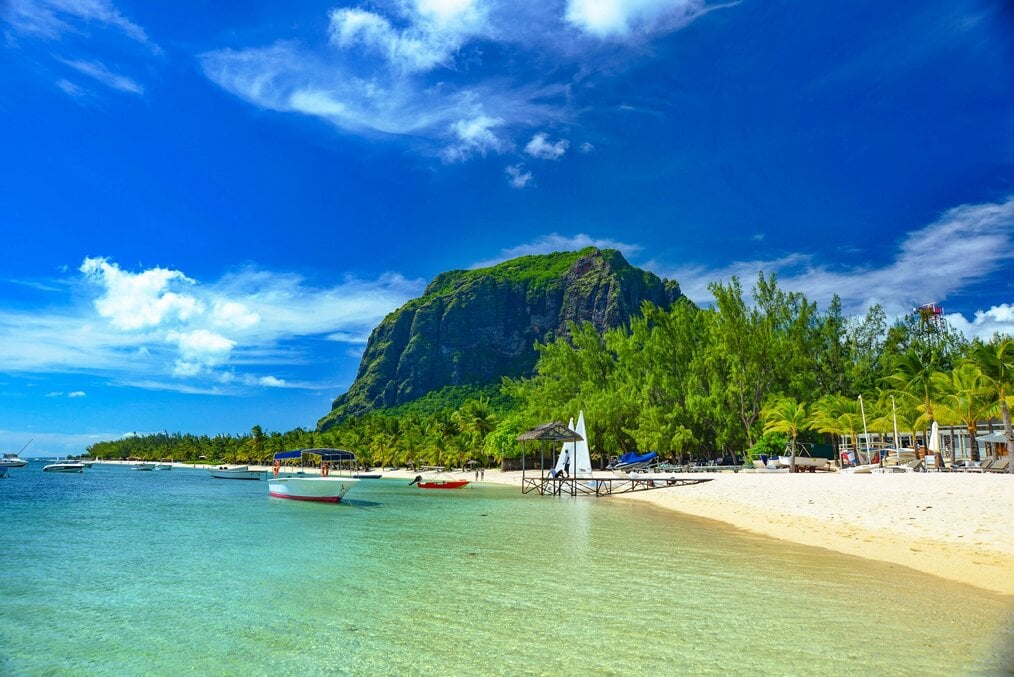
12 Best Countries for Digital Nomad Visas in 2025: Work Remotely and Travel!
Work remotely and travel the world by applying for a visa to one (or more!) of the best countries for digital nomads.
Key Takeaways 🔑
- Some of the best countries for digital nomads include Greece, Malta, Croatia, Costa Rica, and Indonesia (Bali).
- Digital nomads can enjoy an affordable cost of living in places like Thailand, Mauritius, and Georgia.
- When choosing a country to move to as a digital nomad, consider the ease of applying for the visa, minimum income requirements, internet speeds, availability of coworking spaces, and strength of the nomad community.
- Countries on our list offer visas specific to digital nomads, some renewable for 5 years or more.
Digital nomadism is on the rise and countries across the world are catching up with the trend. Every year, new digital nomad visas are launched that allow location-independent remote workers to live and travel abroad.
Currently, over 40 countries worldwide offer some form of visa for digital nomads. To help you avoid a serious case of choice paralysis, we've rounded up 12 of the best countries that currently offer digital nomad visas to make your move abroad easy and legal. Grab your laptop and get going!
What is a digital nomad visa?
A digital nomad visa is a type of visa that allows you to work remotely and legally stay in a foreign country, longer than the typical tourist visa.
The qualifications for a digital nomad visa vary by country. Generally, to qualify for a digital nomad visa, you’ll need to have a job that can be done from anywhere in the world or be a location-independent freelancer. You'll also need to meet a minimum monthly income and fulfill other requirements such as having global health insurance coverage.
Read more: How to Become a Digital Nomad
What to look for in countries with digital nomad visas
Whether you’re planning a short-term stint in each location or eventual long-term residency in a single country, you’ll need to evaluate your choices to make sure they meet your unique needs.
Some important things to look for in digital nomad countries include:
- Internet speed: Connectivity is key for digital nomads. Whether you need sustained connection all day or period logins, fast and reliable internet is a must.
- Coworking spaces: Although many digital nomads find accommodation with wifi and work from home, having the option to use coworking spaces has multiple benefits. Coworking spaces allow you to meet other nomads and remove you from the distractions that exist at home.
- Safety: As a digital nomad, safety is an important consideration. Research destinations of interest to get a better idea of acceptance of diversity. Even if countries have low crime rates, they may not be particularly welcoming to different races, ethnicities, sexual orientation, or gender identity.
- Ease of visa: Many countries are transitioning to online application systems which save you a trip to the local consulate. Locations with established digital nomad programs tend to have processes that are more organized and streamlined.
- Nomad community: Being a digital nomad can be lonely when you’re constantly on the move. Facebook and Reddit are two places to check for country and city-specific groups if finding a community in your potential destination is important to you.
- Cost of living: Many countries require applicants to meet minimum monthly incomes to qualify. Even if you do meet the minimum, research the local costs to make sure you’ll be able to achieve a comfortable standard of living.
- Things to do: Being a digital nomad is about experiencing life like a local so you’ll want to choose locations that appeal to your hobbies and interests. Beach lovers may want to jet around the Mediterranean while avid hikers might find themselves based in South America.
So, are you ready to pick your next digital nomad destination? Let's get started!
1. Costa Rica

🏠 Avg. monthly cost of living: $1,000-$1,600 USD
💰 Minimum monthly income required: $3,000 USD for individuals, $4,000 USD for families
☀️ Best time to go: mid-December to April
💸 Cost of visa: $90 USD upfront with another fee after approval
✏️ How to apply: Get more information including the link to the application on the Costa Rica official tourism site
Costa Rica, loved for its Pura Vida laid-back vibes, is more than just a vacation spot. It’s now one of the handful of countries welcoming digital nomads to its sandy shores. Aside from the obvious benefits of great weather, beach lifestyle, and low cost of living, Costa Rica also offers tax-free living to remote workers who choose to call it home.
There are also plenty of hostels and co-working spaces in Costa Rica, like Selina, equipped with workstations and high-speed internet, to support the abundance of digital nomads!
Once the online application is completed, it will take around 15 days for approval. The visa is good for one year but can be extended for an additional year if you can prove you lived in Costa Rica for at least 180 days during the first year.
2. Malta

🏠 Avg. monthly cost of living: $1,200-$1,600 USD
💰 Minimum monthly income required: $3,001 USD (€2,700)
☀️ Best time to go: May to August
💸 Cost of visa: $364 USD (€300)
✏️ How to apply: Fill out an application for the Nomad Residence Permit online.
The beautiful island of Malta is ideal for remote workers with its nationwide 5G coverage and 400+ free public wifi spots – you can work in your home office or at the local cafe while you enjoy a pastizz, a popular local snack! Though it is an island, you’ll be far from isolated. Affordable flights to mainland Europe operate frequently giving you a great home base to explore.
To qualify for the remote worker visa, you’ll need a foreign job contract, be an owner or part-owner of a registered company, or be a freelancer with foreign contracts. Applicants should have health insurance and proof of temporary accommodation (ex. an Airbnb rental) in Malta. Processing is expected to take up to 30 days. Malta’s digital nomad visa is good for one year and can be renewed twice for a total of three years.
3. Greece

🏠 Avg. monthly cost of living: $900-$1,200 USD
💰 Minimum monthly income required: $3,891 USD (€3,500)
☀️ Best time to go: May to September
💸 Cost of visa: $250 USD (€225)
✏️ How to apply: Fill out a fast-track application at your local Greek consulate to receive an answer in 10 business days.
Housing in Greece is among the most affordable in all of Europe, even beating out Portugal and Spain. Costs for food, shopping, and transportation are also low which means you’ll be well-positioned to save some cash for future travels while soaking up the sun in Greece. What’s more, Athens and Thessaloniki enjoy more than 90% 5G coverage while the national download speed is clocked at around 37 Mbps.
Greece grants a one-year digital nomad visa that can be renewed as a residence permit if you can’t bear to leave the Greek way of living. The initial residence permit is good for 2 years and can be renewed up to a total of 5 years if you’re looking for something long-term. After 5 years, you are eligible for permanent residency status.
4. Thailand

🏠 Avg. monthly cost of living: $800-$1,300 USD
💰 Minimum monthly income required: none specified, must have $16,000 USD in savings
☀️ Best time to go: November to March
💸 Cost of visa: $400 USD
✏️ How to apply: Apply for an e-Visa online through the Ministry of Foreign Affairs.
Often referred to as "The Land of Smiles", Thailand is a popular destination for TEFL teachers. Now with the introduction of the 180-day Destination Thailand Visa (DTV), it’s carving out a name for itself as one of the best countries for digital nomads. On the DTV, you can stay for 6 months straight or come and go during a 5 year period. This makes it a great location for digital nomads who like to country hop and want to spend shorter periods of time in Thailand.
If you’re primarily based in the northern hemisphere, Thailand is the perfect place to escape cold, gray winters. Winter in Thailand is actually the best time to visit! Not only is it the dry season, but lows rarely dip below 65F (18C).
As if it wasn’t already ticking all your boxes, Thailand also has extensive 5G coverage and very low-cost SIM cards with unlimited data. Talk about beautiful AND functional!
5. Portugal

🏠 Avg. monthly cost of living: $1,200-$1,800 USD
💰 Minimum income required: $3,646 USD (€3,280) for individuals + at least $11,000 USD in savings
☀️ Best time to go: March to June
💸 Cost of visa: $83 USD (€75) for less than one year, $100 (€90) for more than one year
✏️ How to apply: After beginning the application process online, you’ll need to attend an appointment at your local Portuguese consulate in the US. The only downside to this visa is that due to increased popularity, processing times can take 4 months or longer.
Due to its popularity among expats, Portugal recently launched a visa specifically for remote workers to replace the former D7 visa. Since then, an increasing amount of digital nomads have chosen this country and it’s not hard to see why – welcoming people, an affordable cost of living, and sparkling beaches are major selling points for location-independent professionals.
Part of the Iberian Peninsula, Portugal’s geography is varied and has something for everyone whether you love lying on the beach or hiking through quiet forests. It’s also small enough that you can enjoy all of these things without having to compromise!
6. Spain

🏠 Avg. monthly cost of living: $1,300-$2,000 USD
💰 Minimum income required: $2,500 USD
☀️ Best time to go: March to May, September to November
💸 Cost of visa: $190 USD
✏️ How to apply: Applications should be made through your local Spanish consulate.
Spain’s digital nomad visa was long-awaited and now it's well on its way to making Spain a top destination for remote workers. You'll need to make 200% more than the national minimum wage ($2,500 in 2024), have health insurance, a clean background check, and a degree relevant to your job to qualify.
Remote workers in gorgeous, sunny Spain will benefit from low tax rates and the ability to earn up to 20% of their income from local Spanish companies. For example, if you’re a freelance writer with a knowledge of Spanish, there are great opportunities for jobs in translation, content creation, and marketing. Spain’s tech industry is also booming and looking for international talent to contribute to its growth.
7. Croatia

🏠 Avg. monthly cost of living: $1,000-$1,500 USD
💰 Minimum income required: $3,001 USD (€2,870) monthly or $39,000 in savings
☀️ Best time to go: June to September
💸 Cost of visa: $61.90 USD (€55.74) when applying at the local consulate in the US, $51.59 USD (€46.45) if applying in-country
✏️ How to apply: There are three ways to apply: within Croatia (US citizens and citizens from other countries with visa-free travel to Croatia), at the nearest Croatian consulate in the US, or online.
Meet the requirements and can’t wait to start your new digital nomad life in Croatia? You don’t have to! US citizens can apply for their digital nomad visa within Croatia. Technically a residence permit rather than a visa, Croatia allows stays up to 1 year. Once your permit expires, you have to wait six months before applying again so unfortunately there is no path to permanent residency like in other countries.
Croatia has truly embraced the digital nomad movement and even offers a dedicated village for remote workers located just outside the waterfront city of Zadar. Affordable housing and the chance to meet other digital nomads from around the world make Zadar and Croatia as a whole a very appealing prospect.
8. Georgia

🏠 Avg. monthly cost of living: $900-$1,400 USD
💰 Minimum monthly income required: none
☀️ Best time to go: May to July, September to October
💸 Cost of visa: free
✏️ How to apply: No application needed!
Georgia is unique compared to the other countries on our list. To be a digital nomad in Georgia, you don’t actually need a visa! Citizens of over 50 countries can enter Georgia visa-free and stay for an entire year. If visa paperwork had you sweating, Georgia is the ideal way to introduce yourself to digital nomad life quickly and easily.
Georgia’s capital Tbilisi has been gaining popularity as a homebase for digital nomads who want to travel Eastern Europe and the Middle East. With a low cost of living, modern amenities, and good food and wine, there’s a lot to love about being a digital nomad in Georgia.
9. Mauritius

🏠 Avg. monthly cost of living: $700-$1,100 USD
💰 Minimum monthly income required: $1,500 USD
☀️ Best time to go: May to December
💸 Cost of visa: free
✏️ How to apply: Apply online for a decision within 48 hours
If you’re looking for something quieter and a little off the beaten track, Mauritius is an island paradise with some of the world’s best beaches. The digital nomad community in this small East African nation is growing as the word gets out but it’s still under the radar. Many digital nomads who come to Mauritius decide to stay for several years so if you’re looking for a more established group of nomads, this is a great place to try.
If you’ve been jet setting for months, Mauritius is a destination to relax and recharge. The visa is easy to apply for and you can even submit an application for the Premium Visa while in the country on a tourist visa. Visa approval time is lightning fast and most are approved by email within 48 hours. Check it out and see if you’d like to set up shop for a while!
10. Indonesia (Bali)

🏠 Avg. monthly cost of living: $900-$1,400 USD
💰 Minimum income required: at least $60,000 USD/year
☀️ Best time to go: April to October
💸 Cost of visa: $32 USD
✏️ How to apply: Applications can be made online through the Indonesian government website.
Bali, a province of Indonesia, is an island paradise with some of the world’s best beaches. Digital nomads looking for a short-term seaside destination can spend up to 6 months enjoying the fabulous weather and scenery while benefiting from amenities like fast internet and an abundance of coworking spaces.
Best of all, life in Bali is affordable, with one-bedroom apartments averaging between $400 to $600 USD a month. Live a simpler, more beautiful life while working by the beach!
11. South Korea

🏠 Avg. monthly cost of living: $1,200-$1,700 USD
💰 Minimum income required: $64,000 USD a year
☀️ Best time to go: March to May, September to November
💸 Cost of visa: $45 USD
✏️ How to apply: Apply in-person at your local South Korean consulate.
If you’re a higher-earning digital nomad who has had dreams of living in South Korea, a visa aimed at remote workers has finally dropped. Compared to other destinations in Asia, Korea’s cost of living isn’t among the lowest, but if you make a good salary as a digital nomad, you’ll still be able to have a comfortable lifestyle.
While South Korea may not have an established digital nomad community yet, it has all the amenities to help it rank among the best: fast internet with good coverage, a growing number of modern coworking spaces, and plenty of cool things to do. As a big hub for TEFL teachers, there will be opportunities to connect with other expats, especially in bigger cities.
12. Italy

🏠 Avg. monthly cost of living: $1,600-$2,000 USD
💰 Minimum income required: $30,000 USD a year
☀️ Best time to go: April to June, September to October
💸 Cost of visa: $128 USD
✏️ How to apply: Apply at your local Italian consulate.
Italy is another much-anticipated digital nomad visa destination that is now open to applicants! Unlike South Korea though, Italy’s minimum income is friendlier to digital nomads with more modest incomes. Cost of living varies across the country but you can always cut costs by living with local roommates (and it’s a great way to improve your Italian!).
Unlike digital nomad visas in other countries, Italy requires you to be a "highly specialized worker”. Thankfully, this just means one of the following: having a minimum of a bachelor’s degree in your field, being licensed by the appropriate agency (teachers included here!), or demonstrating 5 years of professional experience.
Italy’s Mediterranean lifestyle means fresh, healthy food, great weather, and relaxed and friendly people. Italian culture is about enjoying life: spending extended lunches on a terrace in the sun, and enjoying a good meal with family and friends. Workaholics might find themselves a little less tightly wound after soaking up the wholesome, carefree vibes.
Explore Go Overseas’ digital nomad essentials
To support your globetrotting lifestyle, we've partnered with a range of major companies to provide you with discounts on things like travel insurance, accommodation, and more.
Check out our digital nomad essentials and Amazon storefront to stock up on everything you need!
Let’s get location-independent!
The prospect of being a digital nomad can be both exhilarating and scary. Picking up and moving abroad may seem daunting but once you get over the initial hurdles, you’ll realize it’s the best thing you could’ve done for yourself. Who knows, you may want to keep living the digital nomad life for good!
Learn more about the digital nomad lifestyle:
- 15 Best Digital Nomad Jobs - Travel & Work From Anywhere!
- 6 Things I Wish I Knew Before Moving to a New Country by Myself
- How to Travel like a Pro: Airport Tips & Tricks for Stress-Free Travel
- Guide to Moving Abroad: Live Overseas as an Expat
- 5 Realistic Ways to Get Cheap or Free Accommodation While Traveling






